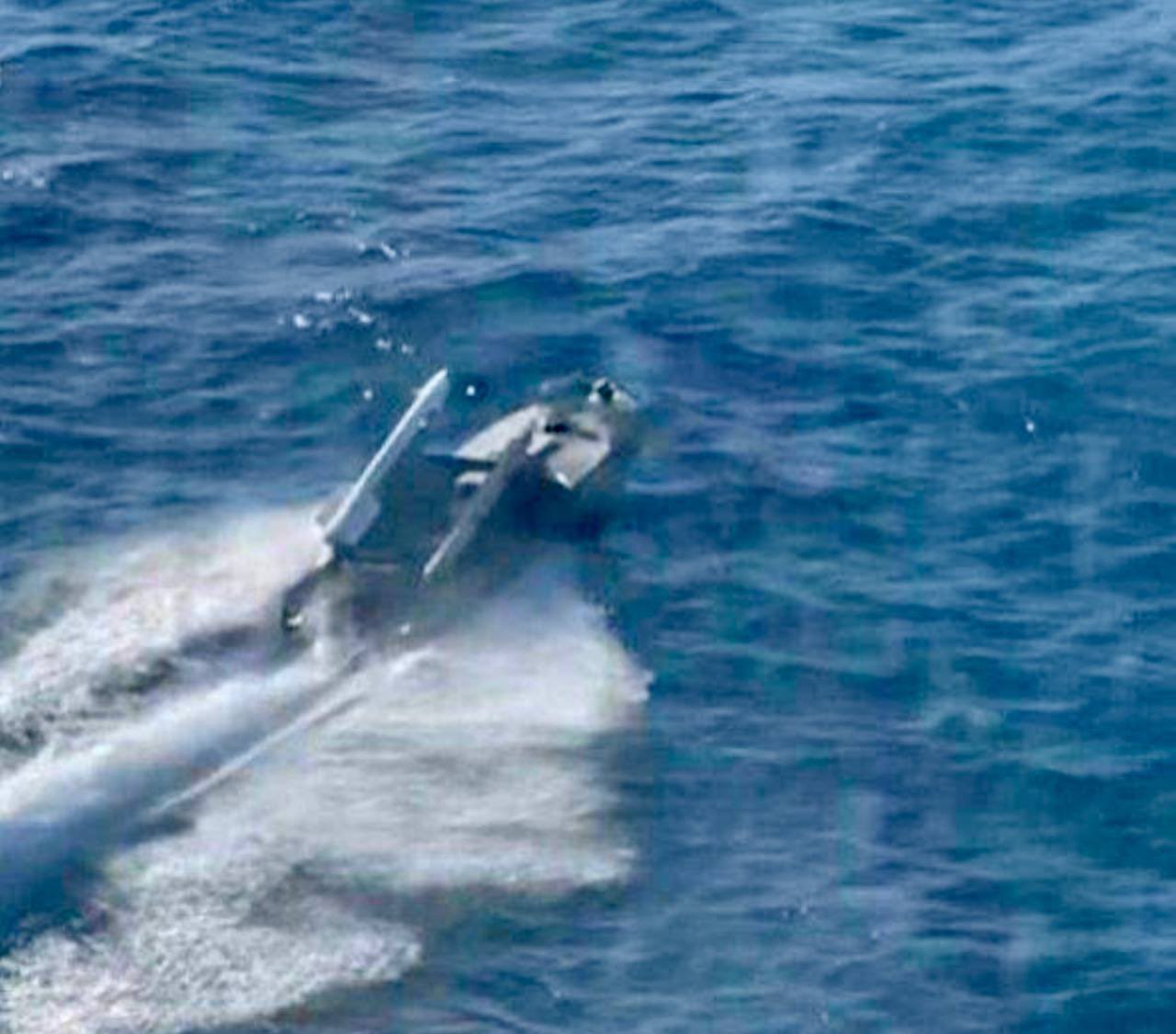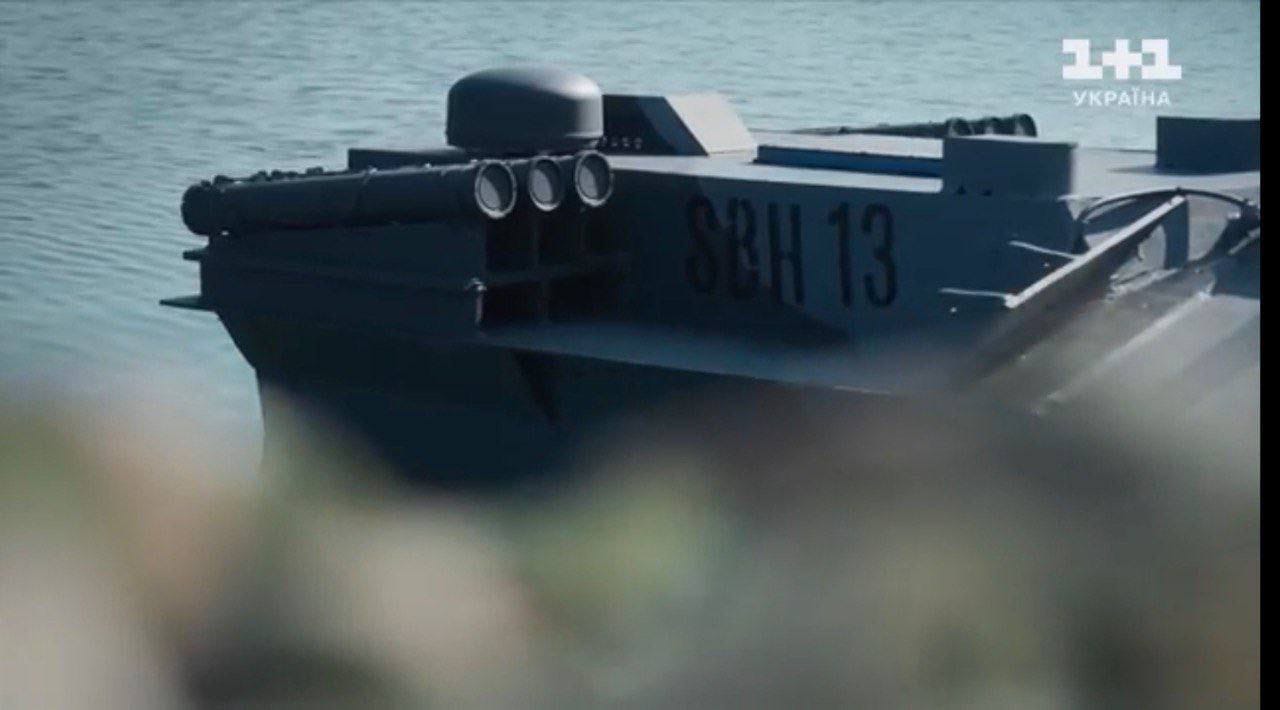At the Defense Tech Innovation Forum 2025 held in Kyiv on February 18–19, SBU Brigadier General Ivan Lukashevych claimed that Russia is trying to replicate the success of the Ukrainian forces in using sea drones.
He claimed that two years late in the game, Russian forces are trying to field sea drones and tactics that Ukrainian forces have routinely employed for deep strikes against Russian assets, strikes that have sapped Russian morale and forced the Black Sea Fleet (BSF) to retreat out of contention.
Ukraine, however, is determined to stay ahead and is developing countermeasures to protect its waters from Russian maritime drones.
He stated that the Ukrainian Navy is working on forces and means to safeguard Ukrainian waters, signaling a shift toward defensive capabilities alongside offensive innovations.
Ukrainian Sea Drones Successes & Advances
Ukraine introduced sea drones early in the ongoing conflict to counter the Russian BSF’s dominance. Its two most successful USVs, Magura V5 and Sea Baby, evolved from rudimentary explosive-laden boats to sophisticated platforms capable of long-range, multi-role operations.
By early 2025, Ukraine had introduced drone boat variants with ranges extending up to 1,700 kilometers, enabling strikes deep into Russian-controlled waters.
The Magura V5 can carry payloads of around 200-320 kilograms and travel 800-1,000 kilometers, while the Sea Baby has been upgraded to haul 860 kilograms over similar distances. The drones’ long reach facilitated attacks on BSF warships and targets like the Kerch Bridge.
Not satisfied with the long range of its sea drones, Ukraine augmented them with capabilities that make them versatile – capable of undertaking multiple roles.
From around the end of 2024 onwards, Ukraine unveiled sea drones equipped with air defense systems to counter the threat from Russian MALE drones like the Orion and Russian helicopters and fighter jets.
In a spectacular first in naval history, Ukrainian sea drone developers equipped Magura V5 drones with Soviet-era R-73 air-to-air missiles, giving them the ability to shoot down Russian helicopters and aircraft. Additionally, drones like the Tavria-14.5 have been equipped with a 14.5mm machine gun turret, which can be used to counter enemy drones and boats.

The threat from Ukrainian sea drones prevented the BSF from disrupting Ukrainian grain exports despite Russia’s withdrawal from the UN Black Sea Grain Initiative.
Advanced Ukrainian Tactics
Besides improving the versatility and lethality of their sea drones, Ukrainian forces have developed effective tactics.
Ukrainian forces coordinate the use of reconnaissance UAVs with sea drone strikes for better targeting and damage assessment. They also use USV swarms of three to five drones to ensure target neutralization.
In March 2024, Ukrainian forces used multiple drones to overwhelm the defenses of the Russian patrol ship Sergey Kotov near the Kerch Strait.
In late 2024, Ukraine deployed its Sea Baby drone armed with six thermobaric launchers to attack Russian naval targets docked or maneuvering in Sevastopol harbor.

According to SBU Brigadier General Ivan Lukashevych, before the attack, Ukrainian drones laid sea mines near the bay’s exit routes.
The thermobaric attack reportedly damaged at least one Russian patrol boat and disrupted port operations, forcing surviving ships to flee toward mine-laden waters, where five reportedly struck mines.
Launch of FPV Drones From Sea Drones
In January, Ukrainian drone boats equipped with abbreviated MLRS (Multiple Launch Rocket System) struck targets in the vicinity of Pokrovskoe and Pokrovka on the Kinburn Spit.
Also, Ukrainian drone boats were used to launch FPV drones in the Kherson region, greatly extending the effective range of FPV kamikaze drones.
Russian Sea Drone Production
The Russian military used an unmanned boat to strike Ukraine for the first time in May 2024.
Footage of the first use showed a high-speed and maneuverable vehicle approaching the shore and exploding. Since then, there have been reports that Russia has significantly increased production of drone boats
Russian presidential aide and Chairman of the Marine Collegium Nikolai Patrushev, in a recent interview, told Rossiyskaya Gazeta, “The Russian Navy is already being equipped with unmanned boats. Their production has been significantly increased taking into account the experience of the special military operation.”
“When creating new types of BECs, it is proposed to use artificial intelligence and machine learning technologies,” said Patrushev.
Russian Multi-Role Hunter Killer Drone
In October 2024, Mikhail Danilenko, managing director of the Kingisepp Machine-Building Plant (KMZ), told Sputnik during an interview that tests of Russia’s new hunter-killer sea surface drone had been successful.
Besides hunting and destroying Ukrainian kamikaze drones that occasionally slip through multi-layered coastal defenses, the new drone, KMZ Vizir, will be able to deliver cargo and ammunition, undertake surveillance and medevac, and provide fire support.
Danilenko said that preparations for the mass production of these drones are currently underway.
Earlier, in July 2024, Danilenko had told RIA Novosti that the Vizir drone boats would be armed with light missiles, placing up to 8 launchers on one side.
“Such a boat can perform the function of a carrier of a missile with low destructive power, which has its own video camera, autonomous joystick control from the ground. You can put a small charge. The speed of the rocket is low, and the rocket itself is a very simple and cheap product, costing about 500 thousand rubles. And we can mount such installations on a boat in the amount of 6 to 8 units, which can carry a charge of low destructive power, but which will point where it is needed and carry out an explosion,” Danilenko said.
The KMZ Vizir can reach speeds of up to 80 kph and has a maximum operational range of 500 km. It is assembled entirely from domestically produced components.
Because of the threat posed by surface-launched air-to-air missiles mounted on them, hunting Ukrainian kamikaze drones using the KMZ Vizir would not just be cheaper than hunting them with armed helicopters or drones, it would be much safer and more effective.
Murena-300S Sea Drone
During the Army 2024 defense show, a Russian drone developer displayed a sea drone very similar to Ukraine’s Magura V5 and Sea Baby drones.
The Russian sea drone, Murena-300S, has a top speed of 45 knots, a range of 500 km, and a payload of 500 kg.
According to the drone developer, LLC KB Center for Unmanned Systems, the drone is capable of mine laying, mine clearance, patrolling, and reconnaissance. It can also provide fire support for ground operations from the sea.
The USV features an inertial navigation system (INS), electro-optical sensors, infrared thermal imaging, and LIDAR.
Interestingly, the drone features a Starlink antenna.
Ukrainian drone boats likely depend heavily on the Starlink communication satellite network for guidance, control, and navigation. Nothing will prevent a Russian drone boat from using Starlink in the Black Sea using a clandestinely acquired antenna.
Conclusion
One reason why Russia may have been slow in developing and fielding a sea drone warfare capability could be the relatively limited vulnerability of Ukrainian forces to drone attacks. Ukraine has no sea going warships.
Also, Russian war aims mandate focus on land warfare – to liberate Russian regions under Ukrainian occupation and erode Ukrainian warfighting abilities.
The Russian focus is unlikely to change. However, it’s likely that Russia will continue to develop its sea drone warfare capability, but only to the extent that it can ward off the threat from Ukraine.
- Vijainder K Thakur is a retired IAF Jaguar pilot, author, software architect, entrepreneur, and military analyst.
- VIEWS PERSONAL OF THE AUTHOR
- Follow the author @vkthakur




